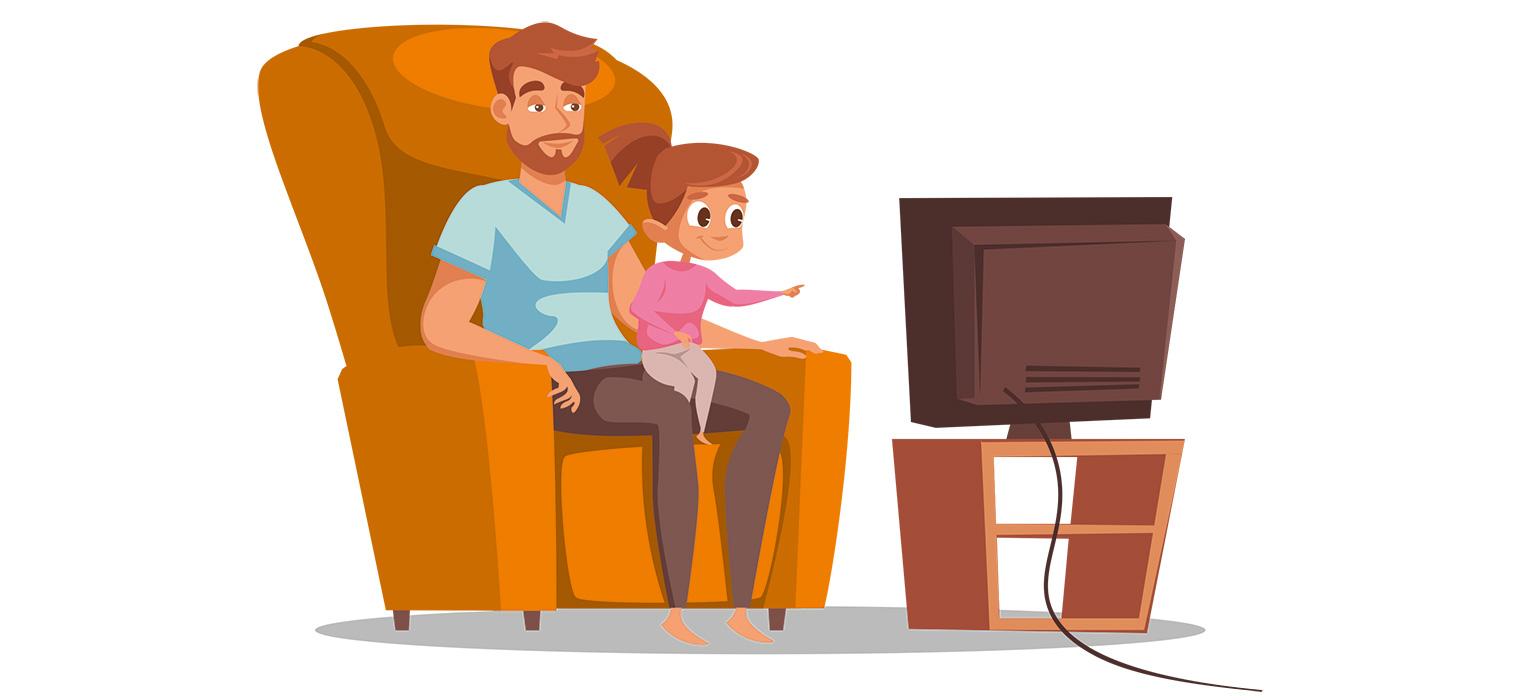
Round Table: Linear TV strikes back
Linear TV isn't dead. In fact, it may just be getting started. We talk to our experts about innovating in the world of lean-back, linear television/

Linear TV isn’t dead. In fact, it may just be getting started. Our experts talk about innovating in the world of lean-back, linear television
This month’s FEED round table guests are:
Eric Bolten, VP of Business Development, Zixi

Paul Martin, VP, Broadcaster Market, Vecima

Steve Reynolds, president, Imagine Communications

FEED: VOD has become the defining term for TV as we know it. What is the future for linear TV in a VOD world?
Eric Bolten: With the advent of streaming and OTT platforms, it has become much easier to deliver file-based content, but the ‘VOD world’ can be overwhelming. Consumers have a hard time deciding what entertainment to choose. Decision fatigue makes live linear appealing.
Linear TV offers lean-back programming. OTT platforms and service providers can use cloud-based delivery to maintain engagement with live linear – through sports, concerts, events such as news, and entertainment – offering a bouquet of channels that can hold viewer engagement and allow audiences to be reprogrammed to the traditional television model.
Paul Martin: Linear TV needs to specialise in ‘time-sensitive events’ – the events that simply cannot be missed or rescheduled. TV on a schedule is well suited to delivering new content first. It is also convenient for people who are not seeking out specific content and are happy to watch what is on. There is certainly a place for linear TV in the next ten years, but it has to stand out from the crowd.

Steve Reynolds: The answer to that question is, absolutely yes! There is a lot of content that still lends itself well to a linear format – live sports is the obvious one. People want to watch the game as it is happening. Replays of live sports have never really taken off from a consumer demand point of view. Yes, there are people who want to watch classic football or boxing matches, but in general, replay rates are low. So, we know there is a good market around linear broadcasting.
News is another use case that lends itself well to that live format. If you are looking to get live reporting when something is happening, you need the ability to do a live stream. A lot of the national broadcasters in the UK and on the continent are spending more money to do live origination, specifically because of news and live reporting.
And it’s important to realise that for both of these use cases – sports and news – the VOD assets are usually just a repackaged version of the live airing. That’s important because it means the production and origination infrastructure is actually the same for use cases like sports and news.
That points towards a topic further down the list of questions concerning innovation. It is surprising how few of these linear channel originations have actually moved towards a platform that can support unified origination. There is no reason why you need to run separate playout or separate origination, or separate master control for a linear TV platform vs. a digital platform.
FEED: What are the opportunities and challenges for collecting audience data on a linear channel?
Eric Bolten: Collecting data on a linear channel has been as much art as science. Audience measurement rating systems like Nielsen allow us to make assumptions and extrapolate those assumptions at scale, but this model is becoming archaic. With so many disparate entertainment platforms in use today, it is hard to know what people are really up to when they are supposedly watching. Did they walk out of the room for a minute? Are they fully engaged, or splitting their time talking, or reading?
But with a linear channel in the data-driven world, you can really see engagement. You can know if ads are seen or skipped, and you can get more granular with raw numbers and actually measure users, witness their behaviour, and not just guess at impressions.
Now linear signals don’t just go to a single stationary TV set sitting in a room, they can go to a multiplicity of devices so that a single set of programming can now literally follow you from your TV set to your tablet, to your phone. That provides viewing data, geography, motion, telemetry data and all kinds of insights. In the future you’re going to see correlations between ads – where you are, who you are – and service providers are going to be able to monetise and target ads based on this data.
Paul Martin: To fully understand the audience of linear content, the channel should go OTT and enable viewers to register in order to watch content. This would enable accurate collection of data and give a holistic view of the consumer’s content consumption. It could even be possible to encourage people to register information about their household if multiple people are gathered around a single TV. The challenge is whether people want to share this or will see it as an invasion of privacy. But treating it as a ‘focus group’ where feedback matters and people are rewarded for getting involved could open up doors to more and better audience data.
The collection of audience data on non-OTT linear channels is likely to be perennially challenging and unsatisfactory. People give their personal data when they get something in return. An OTT viewing experience can provide this.
Steve Reynolds: The reality is, if a consumer has a device, that device is the point at which the audience data gets collected. In a cable or satellite system, it is a set-top box. In an Apple TV or Smart TV environment, it is the consumer device. There are operators that are using data every day to measure, to predict, to monetise. I don’t think it is as much a technical challenge as it is a business challenge. Certainly the ratings agencies around the world don’t like the idea that the operators have better audience data than they do. But that is just the way the technology has evolved.
FEED: Are there more innovative ways of doing playout in linear TV?
Eric Bolten: In live linear, you have the ability to manage continuous streams in conjunction with the segmented world of HLS file-based programming, meaning you can source and pick playout from a variety of sources. Zixi provides universal origination where we take playout or signal from an encoded system and transmit it across the cloud to CDN or MSO and IRD. In the future, you’ll be able to source from live files as VOD and go Live-to-Live, Live-to-VOD, VOD-to-Live, and VOD-to-VOD. We foresee a world where you can go from universal origination to universal source and that will have a big impact on how you conduct playout on linear TV.
Paul Martin: There certainly are! Moving linear TV onto OTT platforms, and perhaps doing this exclusively, will drive audiences to the OTT platform. Once there, it’s easier to do a wide number of new things that offer innovative, on-demand viewing experiences. For example, offering multiple camera angles and customer-driven viewing options, multiple commentary options, tailored advertising and product placements, and stats about the content.Linear TV can provide a host of interconnected content when it’s in the right interactive platform. This is how linear TV could become an all-encompassing experience that is bigger than just the programme being watched.
Steve Reynolds: One area of innovation will be making the creation of multiplatform content more automatic. There is still a silo problem. Some of that we can overcome with better tools in automation, and some of that will require a change in business model and in thinking.
The other piece of innovation, even around linear playout, is going to happen around monetisation. As the linear distribution infrastructure adopts manifest manipulation, dynamic ad insertion (DAI), intelligent ad routers – all of that technology, which has been proven out in the VOD world, needs to be scaled up to work in linear.
The need to scale is orders of magnitude more important than it is in VOD. Having the Super Bowl distributed on OTT was a good proof point of what scaling means. Having some of the bigger FIFA matches and some of the Olympic final events, or the Masters golf, carried on OTT pushes us in the direction to be able to scale to what is required for a broadcast-type audience.
FEED: What are the pros and cons of monetising a linear channel compared to VOD?
Eric Bolten: One pro is that you have an engaged audience, and know what people are watching. This is particularly important for monetising those high-impact live sporting events that bring in high advertising rates and engaged, large audiences. You have a pretty good understanding of what your audience demographics and impression levels will be, and you can deliver that info back to sponsors to support spot rates. In VOD, you can make certain assumptions about the audience you expect for certain content in your library, but it is much harder to predict true audiences and consumption ahead of content going live.
Paul Martin: Linear viewing does have some specific strengths that should be leveraged.
The challenges are that linear is time-sensitive, which can lead to inconvenience in people’s busy lives. Linear simply won’t get the biggest audiences unless the content is unmissable at the time. Linear on a traditional TV platform is also hampered by a lack of real knowledge about who is watching, which reduces the impact of advertising efforts.
But linear’s time-sensitivity can lead to a must-see shared experience. Linear can get much bigger audiences for the right content like sports, news and culturally important content. Linear can also draw specific target audiences, which works well for advertisers who want to reach a general audience with their messages. For marketers looking to capitalise on an engaged audience, linear can be a place to leverage a live, ‘do-it-now’ sentiment.
FEED: What are some tech and techniques for better advertising in linear TV?
Paul Martin: One of the best ways for advertising to improve in linear television is for linear channels to be focused on OTT platforms. This could open up the market to smaller, niche players who would see more value in TV advertising if they could be more sure about the type of eyeballs their ads would reach.
Using consumer metadata at the point of content delivery is going to bring more value to advertising. OTT services can already do this with the available technology. But consumers should be more incentivised to share information about themselves that they know will improve their experiences.
It might seem Big Brother-ish to many, but to others it will be the way that they are provided with the things they really care about.
Steve Reynolds: I think the ability to do DAI is going to be a big piece of what drives the future for linear TV. One of the things that VOD has definitely proven is that targeted and addressable advertising is a far more effective way to monetise audiences.
With targeted advertising, the viewer doesn’t have to sit through a two-minute long ad break – instead, you get one or two 15-second ads that are targeted at you. You will see some of that innovation move to the linear side, where we will be able to do better addressability to tailor that advertising environment more towards the viewer, and that happens because of DAI.
However, one thing that cannot be compromised when moving from traditional linear advertising to more targeted dynamic ad insertion is the quality of the viewing experience. We see the future of linear as taking the best elements from linear, such as brand safety and the premium viewing experience, and combining that with all the benefits of digital.

FEED: Are there some revolutionary ways we should be thinking about linear TV?
Eric Bolten: Linear TV in its software defined and OTT format means more immersive experiences for consumers – going from HD to UHD, with 4K, 8K and even 12K formats. Live linear will provide such breakthroughs ahead of the file world because there will be better economics on the linear side to support them.
Secondly, linear TV presentation will be transformed by machine learning employed to track human behaviour in order to optimise programming suggestions. In a file-based world, providers are going to be as good as the data lake or inventory of programing they have available, and their ability to match that selection to their consumer base. In linear, you’ll want to have unlimited access afforded by a virtualised, cloud-based set of signals that are being artificially teed up and optimised to make it to that consumer edge.
Using a software-defined architecture, programmed channels will be available to consumers through multiple streaming services, and that will allow for the ultimate curated set of programming that consumers can see live with customised playlists, according to what consumers want to see.
Paul Martin: Linear needs to go 100% OTT and make best use of the technology to innovate the user experience. This means that TVs and our interaction with TVs needs to change.
Viewing a programme on a linear schedule can be more personalised in the OTT domain. What we are watching can be linked to other relevant content; we can watch it with a community of people with common interests, we can have ads that appeal to us, and we can choose to watch the available content the way we want to.
VOD services have done this for content we specifically want to watch, but what about the full, immersive experience that can come with time-sensitive linear TV? That is where live and scheduled content can gain an upper hand and be the more ‘now’ content to see.
Steve Reynolds: Virtualisation is going to provide more flexibility and scalability. In a virtualised environment, microservices can deliver highly efficient playout with optimal use of the infrastructure. Using a virtualised environment, you are not shackled by hardware. You can turn on 4K or HDR for one event and turn it off afterwards. This is the new business model for broadcasters. Through a virtualised infrastructure, whether on your metal or a cloud provider, content delivery becomes OPEX. You can decide how much to spend on delivering an individual programme or event, against the costs of delivery.
If you want to try something, you can. If you want a pop-up channel, perhaps because you want to see if Ultra HD will win new audiences, you can decide to try it today and be transmitting tomorrow.
The core business of the broadcaster or content network remains to build content, originate channels and sell advertising. The playout suite of the future will allow them to do just that, cost effectively – and across every platform.
This article first featured in the August 2020 issue of FEED magazine.
